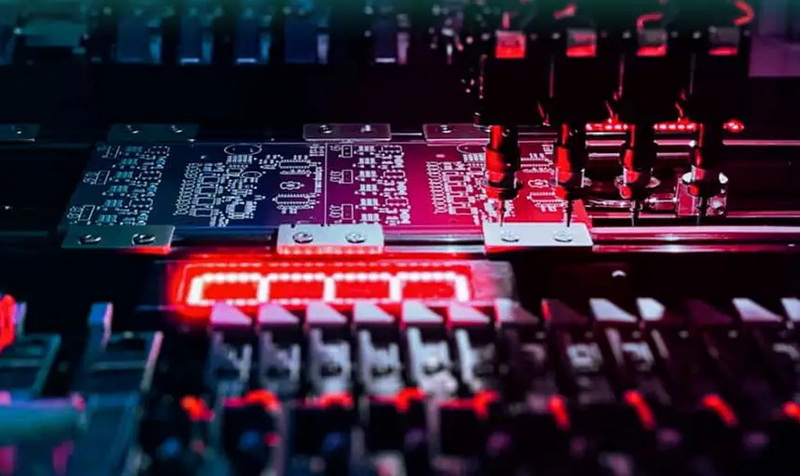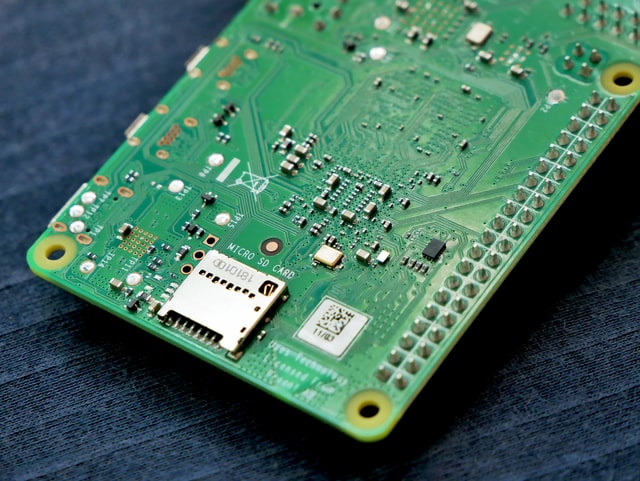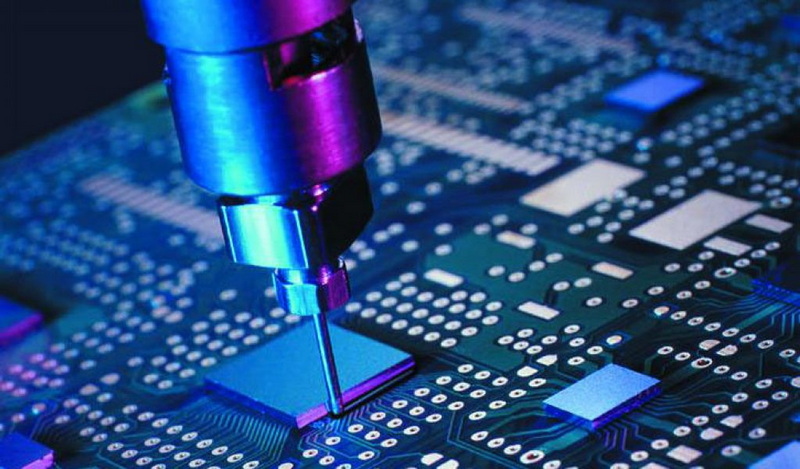Content Menu
● Understanding SMT Nozzles
>> What are SMT Nozzles?
>> Types of SMT Nozzles
● The Role of Small SMT Nozzles in Soldering Efficiency
>> 1. Precision Placement
>> 2. Improved Thermal Management
>> 3. Enhanced Solder Joint Quality
>> 4. Flexibility in Component Handling
>> 5. Reduced Material Waste
● Technological Advancements Driving Small SMT Nozzle Efficiency
>> 1. Advanced Materials
>> 2. Automation and Robotics
>> 3. Software Innovations
● Practical Applications of Small SMT Nozzles
>> 1. Consumer Electronics
>> 2. Automotive Industry
>> 3. Medical Devices
>> 4. Aerospace Applications
● Challenges and Considerations
● Conclusion
● FAQ
>> 1. What are the advantages of using small SMT nozzles?
>> 2. How do small SMT nozzles improve thermal management during soldering?
>> 3. Are there any downsides to using small SMT nozzles?
>> 4. Can small SMT nozzles be used for all types of components?
>> 5. How does using small SMT nozzles contribute to sustainability?
>> Citations:
In the world of electronics manufacturing, Surface Mount Technology (SMT) plays a crucial role in assembling components onto circuit boards. A significant aspect of this process is the use of nozzles, particularly small SMT nozzles, which have been shown to enhance soldering efficiency in various ways. This article explores how small SMT nozzles contribute to improved soldering efficiency, the technology behind them, and their practical applications in modern manufacturing.

Understanding SMT Nozzles
What are SMT Nozzles?
SMT nozzles are specialized components used in pick-and-place machines to handle and position surface mount devices (SMDs) accurately on printed circuit boards (PCBs). They utilize vacuum suction to pick up components and place them precisely where needed. The design of these nozzles varies based on the type of component being handled, with different shapes and sizes available to accommodate various electronic parts.
Types of SMT Nozzles
1. Material Types:
- Tungsten Steel: Durable but can turn white over time.
- Ceramic: Resistant to wear but fragile.
- Diamond Steel: Extremely durable but expensive.
- Plastic: Suitable for sticky components but has a shorter lifespan.
2. Shape Variations:
- Round
- Square
- V-shaped
3. Size Specifications:
Different sizes are tailored for specific component dimensions, ensuring optimal handling and placement efficiency.
The Role of Small SMT Nozzles in Soldering Efficiency
Small SMT nozzles offer several advantages that directly enhance soldering efficiency:
1. Precision Placement
Small nozzles allow for precise placement of solder on intricate PCB designs. Their smaller diameter means they can reach tight spaces between components without causing bridging or shorts. This precision is vital when dealing with densely populated boards where component proximity is critical. The ability to navigate these tight spaces ensures that each component is placed accurately, reducing the risk of errors that could lead to costly rework or product failure.
2. Improved Thermal Management
The use of small nozzles can lead to better thermal management during the soldering process. Smaller diameters reduce the volume of solder applied, which can help control the heat transfer to nearby components, minimizing the risk of damage due to excessive heat exposure. This is particularly important in high-density assemblies where thermal sensitivity is a concern. By controlling the amount of solder used, manufacturers can ensure that sensitive components remain within their safe operating temperatures throughout the soldering process.
3. Enhanced Solder Joint Quality
With smaller nozzles, manufacturers can achieve better control over solder joint formation. The reduced solder volume allows for more accurate wetting and filling of pads, leading to stronger and more reliable connections. This results in fewer defects during assembly and increased reliability in the final product. High-quality solder joints are essential for ensuring long-term performance, especially in applications where reliability is critical, such as automotive or medical devices.
4. Flexibility in Component Handling
Small SMT nozzles provide flexibility in handling various component sizes and shapes. By using a range of nozzle sizes, manufacturers can adapt quickly to different production runs without needing extensive reconfiguration of their equipment. This adaptability is crucial for meeting diverse customer demands while maintaining efficiency. Whether dealing with small capacitors or larger integrated circuits, small nozzles can be optimized for each specific application.
5. Reduced Material Waste
Using small nozzles helps minimize solder waste during the assembly process. By applying only the necessary amount of solder required for each joint, manufacturers can reduce excess material usage, leading to cost savings and a more sustainable production process. This efficiency not only benefits the bottom line but also aligns with environmental considerations by reducing the overall consumption of materials.

Technological Advancements Driving Small SMT Nozzle Efficiency
The evolution of manufacturing technologies has significantly impacted how small SMT nozzles are designed and utilized:
1. Advanced Materials
The development of advanced materials has led to more durable and efficient nozzle designs. For example, new coatings can enhance wear resistance while maintaining a lightweight structure. These advancements allow manufacturers to produce smaller nozzles that do not compromise on durability or performance.
2. Automation and Robotics
The integration of automation and robotics into manufacturing processes has further enhanced the capabilities of small SMT nozzles. Automated systems can adjust nozzle parameters in real-time based on feedback from sensors monitoring placement accuracy and solder joint quality. This level of precision ensures that even the smallest components are handled effectively.
3. Software Innovations
Modern software solutions enable manufacturers to simulate assembly processes before actual production begins. By analyzing how small SMT nozzles interact with various components on a PCB, engineers can optimize nozzle designs and placement strategies to maximize efficiency and minimize errors.
Practical Applications of Small SMT Nozzles
Small SMT nozzles find applications across various industries due to their versatility:
1. Consumer Electronics
In consumer electronics, where devices are becoming increasingly compact and complex, small SMT nozzles are essential for assembling smartphones, tablets, and wearables efficiently.
2. Automotive Industry
The automotive industry relies heavily on reliable electronic systems for safety features and performance enhancements. Small SMT nozzles ensure that critical components are assembled correctly, contributing to vehicle safety and reliability.
3. Medical Devices
In medical device manufacturing, precision is paramount. Small SMT nozzles help ensure that tiny components used in devices such as pacemakers or diagnostic equipment are placed accurately without risking damage.
4. Aerospace Applications
In aerospace applications, where weight reduction is critical without compromising safety or performance, small SMT nozzles facilitate the assembly of lightweight yet robust electronic systems.
Challenges and Considerations
While small SMT nozzles offer numerous benefits, there are challenges associated with their use:
- Wear and Tear: Smaller nozzles tend to wear out faster than larger ones due to their reduced wall thickness. Regular maintenance and timely replacement are essential to ensure consistent performance.
- Compatibility Issues: Not all components are suitable for handling by small nozzles; careful selection based on component size and shape is necessary to avoid handling errors.
- Calibration Requirements: Small nozzles require precise calibration within pick-and-place machines to ensure accurate placement and optimal performance.
- Cost Considerations: Although small nozzles can reduce material waste, their initial cost may be higher than standard-sized nozzles due to advanced materials and manufacturing techniques.
Conclusion
In conclusion, small SMT nozzles play a pivotal role in enhancing soldering efficiency within the electronics manufacturing industry. Their ability to provide precision placement, improve thermal management, enhance solder joint quality, offer flexibility in component handling, and reduce material waste makes them indispensable tools for modern assembly processes. As technology advances and electronic designs become increasingly complex, the importance of small SMT nozzles will continue to grow.
By understanding how these tools function within the larger context of electronics manufacturing, businesses can leverage their capabilities to improve productivity while maintaining high standards of quality and reliability.

FAQ
1. What are the advantages of using small SMT nozzles?
Small SMT nozzles provide precision placement, improved thermal management, enhanced solder joint quality, flexibility in component handling, and reduced material waste.
2. How do small SMT nozzles improve thermal management during soldering?
By applying a smaller volume of solder, small nozzles help control heat transfer to nearby components, reducing the risk of damage from excessive heat exposure.
3. Are there any downsides to using small SMT nozzles?
Yes, they tend to wear out faster than larger nozzles, may have compatibility issues with certain components, and require precise calibration for optimal performance.
4. Can small SMT nozzles be used for all types of components?
No, while they are versatile, not all components are suitable for handling by small nozzles; careful selection based on size and shape is necessary.
5. How does using small SMT nozzles contribute to sustainability?
By minimizing excess solder usage during assembly processes, small SMT nozzles help reduce material waste and promote more sustainable manufacturing practices.
Citations:
[1] https://pure.coventry.ac.uk/ws/portalfiles/portal/100112527/McMaster2024AAM.pdf
[2] https://www.tronstol.com/selection-and-function-of-pick-and-place-nozzle.html
[3] https://www.ipc.org/system/files/technical_resource/E39&S08_02%20-%20Gerjan%20Diepstraten.pdf
[4] https://www.neodensmt.com/news/do-you-know-the-function-and-choice-for-smt-no-39242403.html
[5] https://www.itweae.com/sites/default/files/technical-papers/GJD%20Paper%20-%20Design%20Improvements%20for%20Selective%20Soldering%20Assemblies%2012-9-2015.pdf
[6] https://www.itechsmt.com/blogs/news/how-to-use-the-smt-nozzle-flexiable
[7] http://www.smtworldwide.com/pf/ns-dual-solder/
[8] https://iconnect007.com/index.php/article/52613/smt-preventive-maintenance-stop-5-major-problems-with-pick-and-place-nozzles/52616




















